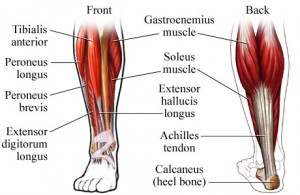How to choose ski boots; the missing detail?

How to Choose Ski Boots.
How to choose ski boots. Sooner or later, if you’re into skiing, you’ll find yourself mulling over some ski boot ideas that you’ve found on the internet, then, when you’re finished with that , you go to your recommended bootfitter and ask for advice. Thank God for the professionals.
However, if you want something “new” to think about, here you are:
How much forward lean do your ski boots have?
And an even better question; how much forward lean do you WANT on your ski boots? Not so easy to answer…
Firstly, a little reminder on the tricky points on boots:
1. Width
How wide are your feet and how much are you able to/willing to squeeze those paws of yours in a pair of cold plastic shells?
You already know the answer; if, at the start of the season you want to go more racer, you go for glory and pain. Few seasons after that, you’ll go for comfort and warmth (at the end of the day, this isn’t the Middle Ages, there’s no need for torture).
2. Flex
A high flex rating is racy, a low number is soft, and that rating obviously should be calculated in conjunction with your weight, ski ability and body segments (We’ll come back to this one, bear with me).
On top of that, this flex number varies from brand to brand.
However, what’s important to remember is that it’s not just about the forward flex. In fact, it is more about the lateral stiffness. The more lateral “bend” you get from the plastic, the less the efficiency. Stiffer “lats” and you have a demon of precision. Make sense, doesn’t it?
3. Feet
Or more specifically, and literally; your footprint; As in, the way your foot stands on the ground.
There are now many kinds of machinery, materials, and ideas to help develop footbeds for your particular footprint.
“You should get the print while standing up so it emulates skiing” (yes, but i’m not skiing now, am I);
“You should have it done while sitting so it follows the natural curve of the feet” (what curve? The one I’ve got when I’m asleep?);
“We have a 3D scanner, so you can see the lines under your foot and predict the future”.
All that, and then you go see the orthopedic that works with olympian runners and triathletes and he just laughs at your customised ski footbeds.
At the end of the day you are the only one that will develop the sense of what works for you.
And now, back to the point:
4. Forward lean.
Yep.
So.
Do you squat? Do you use heel risers when squatting? Do you have a personal trainer? Does he wants you to use the heel riser or not? And if so why? What are these decisions based on?
How much forward lean do you have in your boots? And how much of it do you want? How much do you actually need!?
Surely your bootfitter had a look at it.
Or maybe you should have decided yourself before going to the shop.
“But surely that’s the bootfitter’s job..”
“Yes but i am well informed, i should know..”
“That personal trainer should have told me!”
Posture
The point is, from a biomechanical perspective, the amount of forward lean in your boot is essential to the balance of your body.
If you spend a lot of time in boots, the position that you assume becomes your new posture, and the difference between the correct one and the wrong one can be translated in the amount on money you have (or will have) to spend on physio and massages..
Ski boots forces
As the boots force your lower joints into a locked position they will affect the hip aligment as well as the spine alignment.
Forces that you create or receive (during impacts) will be distributed around the muscles and the bones and you need to make sure your body is the right place to be able to absorb them correctly.
In turn this will affect your skiing. If you are too far forward you overbalance over the fronts, if you are too straight you end up on your heels. And it doesn’t end with just the angle of the upper plastic.
Ski Boots Wedges
A difference in height between your toes and your heels inside the boot will increase the forward lean of the lower leg and therefore the general body position. That is the ramp angle.
No ramp angle and your forward lean totally depends on the lean of the plastics and your ability to “adduct” (to draw or pull) your shin towards the foot. That is partially dependant on the strength of your tibialis and peroneus muscles (front of the shin) but mainly by the length and range of movement of the calf muscles (which are at the bottom of your Posterior Kinetic Chain. The PKC includes all the muscles down your back, from the skull to the heels . One issue in the PKC may affect your boot decision as well).
Women and Ski Boots
Women may have the tendency of shorter calf muscles (high heels are a famous cause of this), but males have a general tendency of muscle rigidity/shortening in the posterior chain. And that’s why, sometimes, to make your and his life easier, the famous Personal Trainer sends you on top of a wood plank and lets you squat in peace.
But then again, if high heels shorten that muscle chain, surely you want to live in the hope of changing that and you shouldn’t squat on a ramp angle. Yes, and no. But that’s a long story.
Ramp Angles in Ski Boots
What matter now is what we find in boots.
And in boots we also find ramp angles.
The so-called footboard or wedge; the piece of plastic you find under your liner, lying at the bottom plastic of the shell, may have a ramp angle.
You (or the bootfitter..) should be able to modify those angles in order to find the right net angle which will create neutrality, as in giving you a “start position” in which you stand in the point where the pressure is not fully on your muscle and it’s not fully on your joints.
Ramp Angle on Skis
Once that is done, you could also consider the delta angle with the bindings, to reset you to your new neutral position (yes, some bindings do have a ramp angle. The Maker Piston plate, for example, has a 2 mm negative difference between the toe and heel – negative, as in the heels are lower than the toes..).
Mission.
Ski Boots in detail (2015 models)
Here below you can find some examples of forward lean and ramp angle in common boots:
Atomic Redster Pro 16° to 18° + 4° ramp angle
Head Raptor 17° + 5° ramp angle
Lange RS 14° to 16° + 4° ramp angle (same in Rossignol Hero)
Lange RX 12° to 14° + 4° ramp angle
Fischer Vacuum 14° to 17° + customisable ramp angle
Rexxam Data and Forte 14°+ customisable ramp angle
Rexxam Power Rex 12,4°+ customisable ramp angle
Scott G1 130 13° + walking mode
Summary
How to choose ski boots then? The boot should be chosen and tailored not just based on the feet you have but also on what’s above them. Following the natural morphology of your body, rather than your body adjusting to the boot, you will be able get the best performance out off your skiing.
Follow us on facebook and social media to find out more about how to choose ski boots and other ski equipment related articles!
Check out our Autumn and Winter Gap Courses, ISIA Level 3 Course, Level 4 Course, Race Training as well as the Full Focus, our one to one coaching course.
Looking for summer training? Check out our Summer Ski Instructor Training schedule!
The Subzero Coaching Team

How to choose ski boots – the missing detail